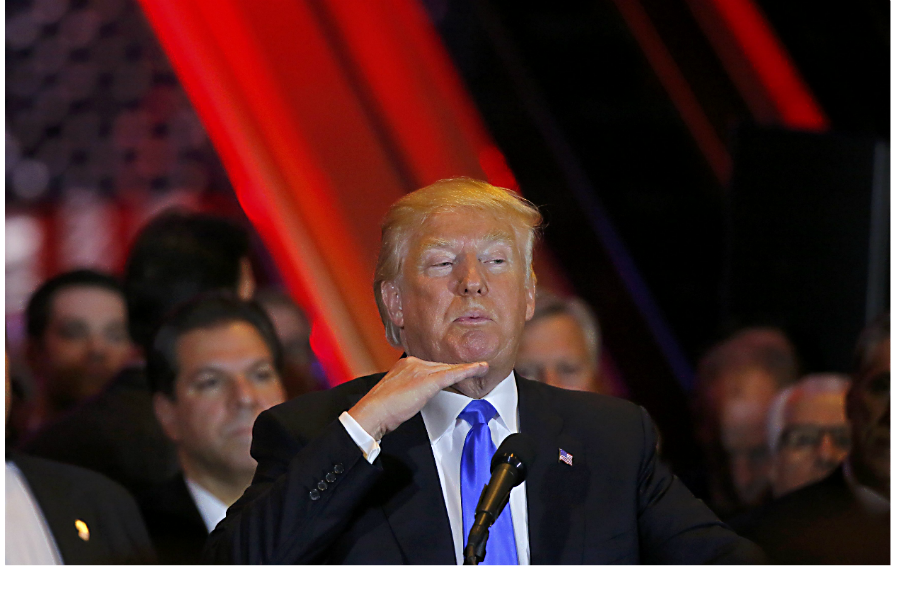Mind the gap: Three numbers that should worry Trump
Loading...
| Washington
Tuesday was pretty good for Donald Trump. He swept five states and edged closer to the magic number of 1,237 delegates needed to win the Republican presidential nomination. His winning numbers were impressive, ranging from 54 percent of the GOP primary vote in Maryland to 64 percent in Rhode Island. It sure looks like he’s no longer a plurality candidate winning split fields by less than majority vote.
Trump said Tuesday night he considers himself the “presumptive nominee.” That may be presumptuous – his path to a first-ballot convention win remains narrow. But it’s increasingly difficult to see how the anti-Trump forces pull together to stop The Donald. So far Ted Cruz and John Kasich haven’t formed an effective anti-Trump partnership.
That said, the numbers aren’t all great for the Trump campaign. Contained within exit polls and demographic data are hints that his prospective takeover of the GOP isn’t going smoothly. Trump also said last night that he’s a “uniter.” Here are three data points that indicate he’s something else.
TURNOUT. Yes, Trump won big on Tuesday. But he did so with a relatively small GOP turnout. In the six northeastern states that voted during the last eight days, the Republicans who bothered to cast ballots averaged only 9.9 percent of the voting-eligible population, according to data cited by FiveThirtyEight. By contrast, in the New Hampshire primary Republican turnout was 27.8 percent of the voting-eligible. In Wisconsin the comparable number was 25.6.
Why the drop? One theory: Lots of anti-Trump Republicans are discouraged and not bothering to go to the polls.
“The #NeverTrump voters might not be voting for Trump, but they might be staying at home,” writes FiveThirtyEight’s Nate Silver.
DIVISION. It’s just one state, but Pennsylvania produced an exit poll result that “might give GOP consultants the night sweats,” according to NBC.
Sixty-nine percent of Democrats said that the competitive primary on their side was “energizing” their party, according to NBC data. Republicans did not make a similar judgment. Fifty-eight percent of GOP voters said the primary process was “dividing” their side.
Pennsylvania can be a big battleground state in general elections. Just in case you’re wondering.
ENDORSEMENTS. Yes, yes, it’s a common rejoinder: Who cares what some unknown legislators from far corners of the country chooses to do with their presidential votes? But the fact is that political endorsements are not advertisements, like athletes endorsing shoes they don’t wear. They’re usually signals to other lawmakers, lobbyists, donors, and the party apparatus at large about the nature and course of the campaign.
Thus they’re symbols of acceptance. And the symbol for Trump is flashing red. He’s been endorsed by a grand total of three governors, and one United States senator. By way of contrast, 13 governors and 40 senators have endorsed Hillary Clinton.
Not that Cruz is doing much better than Trump. He’s backed by only three of his Senate colleagues.
“It’s as if the elected Republican Party stopped caring about the outcome of this race weeks ago,” writes Michael Brendan Dougherty at The Week.
We’ve been very wrong about Donald Trump’s electoral prospects in the past. When he jumped into the presidential race, he had high unfavorable ratings – but that did not turn out to be a barrier, given how close he’s come to the nomination. It’s possible that once (if) he’s actually the nominee, the party will rally around him. Parties generally do.
It’s also possible that his takeover of the GOP is a hostile one, and that many of the captives are sullen and uneager to work for his election in the fall. Right now that seems the more likely scenario.






